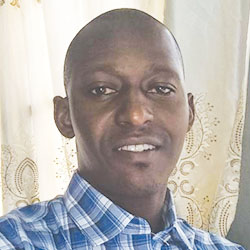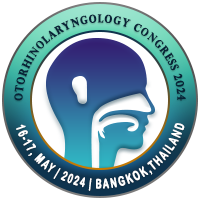
N’faly Konate
ENT and Head and Neck Surgery Department University Hospital Center , MalliTitle: ENT and Head and Neck Surgery Department University Hospital Center
Abstract
OBJECTIVES:
Our work aimed to expose the methods of resection of plunging goiters by pure cervicotomy and to compare the results of our study with those of the literature. MATERIAL AND METHODS: This was a retrospective study extended over 5 years from January 2016 to December 2020 on the medical observations of 20 cases of thyroidectomy for plunging goiters in the otolaryngology and cervicofacial surgery department of the Gabriel Touré University Hospital of Bamako. RESULTS: During our study period, 170 cases of thyroidectomies were performed in the department, including 20 cases of plunging goiters, i.e. (11.76%) surgical goiters. The average age was 43.5 years with extremes ranging from 20 to 80 years. The age group of 40 to 50 years was the most represented. We noted a female predominance with a sex ratio of 0.25. Six patients (30%) had a family history of goiter. The average duration of evolution of goiter was 8 years with extremes ranging from 2 to 17 years. The lower edge of the goiter was not palpable in any of our patients. Chest X-ray was performed in all patients and showed greater mediatisnal opacity in 11 patients (55%), tracheal deviation in 7 patients (35%), and tracheal compression in 2 patients (10%). Cervicothoracic computed tomography was performed in 18 patients, i.e. 90% of cases. The anterior location represented 85% and the posterior location 15%. Plasma thyrocalcitonin was measured in 3 patients, i.e. 15%.
All the goiters were extirpated exclusively by the cervical route. Our patients benefited from a total thyroidectomy in 70% of cases (n = 14), a subtotal thyroidectomy in 20% of cases (n = 4) and a lobo-isthmectomy for 10% of patients (n = 2).
Dissection of the recurrent nerve was performed retrogradely at its entry point into the larynx in all patients. Accidental devascularization of the lower parathyroids was noted in three patients (15%) and infiltration of the upper parathyroids was noted in 1 patient (5%). Reoperation for totalization was performed in one patient (5%). Lymph node dissection was performed in two cases (10%). Post surgery radiotherapy was performed in two cases (10%). Clinical and biological monitoring was normal in our patients.
Biography
TBA

